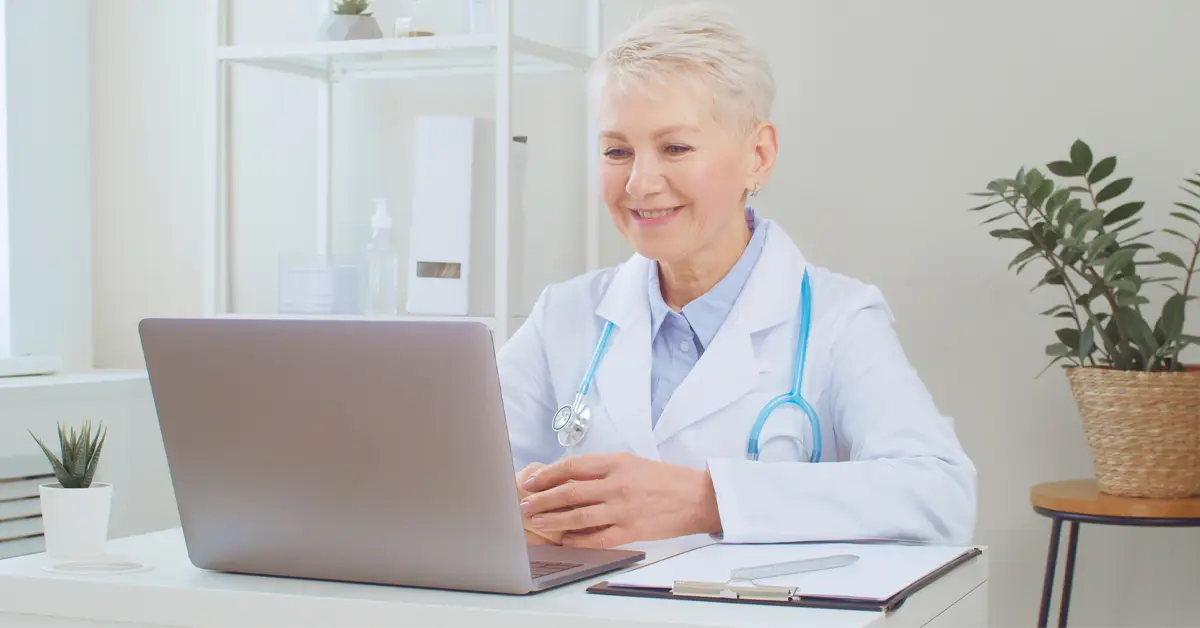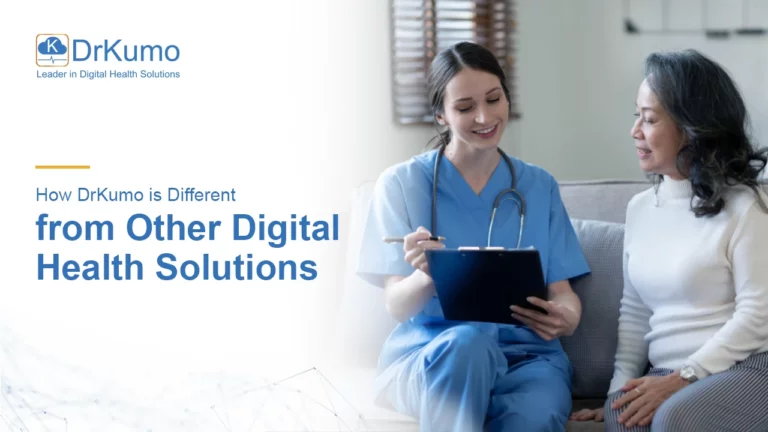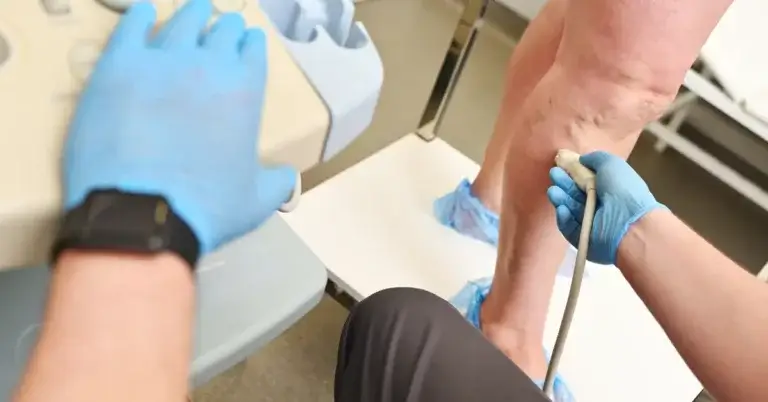The use of remote patient monitoring (RPM) is becoming increasingly popular within the healthcare industry. According to Research and Markets, the global RPM systems market is expected to be worth more than $1.7 billion by 2027, a nearly 128% increase from the $745.7 million opportunity it presently represents.
It provides various benefits to healthcare providers and patients, from improved care coordination to enhanced patient engagement. To ensure the most effective use of patient monitoring, healthcare providers must understand how to utilize this technology effectively. This article will provide tips and strategies for healthcare providers on how to maximize the benefits of remote patient monitoring.
Know Your Patients’ Needs
To understand your patient’s needs and have an established relationship between the patient and the healthcare provider, it is essential to take the time to get to know them personally. Ask them questions about their lifestyle, health concerns, and goals to gain a better understanding of their needs. Listen closely to what they tell you and pay attention to any nonverbal cues they may exhibit. These can provide valuable insight into their true feelings and needs. Engaging in open dialogue with your patients is critical to providing patient-centered care that meets their needs.
Knowing your patients’ needs is essential to providing them with the best care. Patient data is critical in this process, as it can inform healthcare providers about the health status of their patients. Remote patient monitoring (RPM) is a great way to collect patient data and track chronic conditions over time. RPM involves using a medical device to collect data from the patient, which is then transmitted to a secure online database and user-friendly portal that allows for real-time monitoring by the patient’s provider.
The program can provide insight into how healthy treatments work and what additional treatments might be needed. Through the utilization of this technology, you as the provider can understand your patient’s needs and provide better target interventions, leading to improved outcomes for those with chronic conditions.
Set Up a Patient Portal for Effective Remote Patient Monitoring
Establishing a patient portal is becoming increasingly popular among healthcare organizations, as it allows for a more efficient and cost-effective way to monitor patient health. With the help of RPM programs, healthcare organizations can use remote patient monitoring devices to track and store vital signs, medications, and other essential data about their patients’ health. By using this data, healthcare providers can better understand the health of their patients, even when they are not physically present.
In addition to providing better care for patients, RPM programs also offer several benefits, such as reduced costs from fewer hospital visits and improved patient satisfaction by allowing patients more flexibility and control over their health care. Setting up a patient portal is an effective way for healthcare organizations to take advantage of these benefits while still providing quality patient care. Read on to learn how.
Select a Patient Portal Software
Research available options to select the best fit for your organization. Look for features like electronic health records (EHR) integration, scheduling capabilities, secure messaging, appointment reminders, and patient engagement tools.
Set up administrative accounts
Create administrator accounts with appropriate security permissions to grant access to staff members who will manage the portal.
Establish user accounts
Establish individual user accounts for patients and staff members using the portal. Depending on your chosen software, this may involve setting up unique usernames and passwords or other authentication methods like two-factor authentication.
Configure settings
Configure settings for features like appointment reminders and secure messaging based on your preferences and applicable regulations in your area. Ensure staff members understand how to use various settings and are familiar with any policies related to patient data privacy and security that apply when using the portal.
Test it out
Test the patient portal by having staff members log in with their user accounts and try out different features to ensure they understand how it works before inviting patients to sign up for an account.
Promote it
Create promotional materials such as brochures, ads, or emails to inform patients about the benefits of signing up for a patient portal account and instructions on how to do so. Post these materials in prominent locations at your practice or office, such as waiting rooms or reception areas, or send them electronically via email or text message campaigns.
Implement an Automated Treatment Plan via RPM
Implementing an automated treatment plan is essential to providing quality patient care. Telehealth and remote patient monitoring (RPM) can be practical tools in helping to monitor patient health data and improve health outcomes. CPT codes identify the services provided under the RPM system, such as remote patient monitoring equipment and examples of remote services.
In cases of health emergencies, RPM and telehealth can provide real-time data to help healthcare professionals make informed decisions about treatments. RPM equipment includes wearable sensors that track patients’ vital signs and other health aspects, allowing clinicians to assess a patient’s condition and progress over time. By using automated treatment plans combined with telehealth and RPM, healthcare providers can improve their patient’s overall health outcomes. Telehealth can provide real-time data to help healthcare professionals make informed decisions about treatments.
Establish a strong relationship between the patient and the healthcare provider
Regular communication is essential for successful remote patient monitoring for patients and providers. This allows a better understanding of the patient’s condition, health goals, and treatment plan.
Provide devices to the patient
Devices provided and used to collect and transmit data includes blood pressure monitors, glucose meters, and body weight scales to facilitate remote monitoring.
Utilize remote therapeutic monitoring
Remote therapeutic monitoring involves regularly collecting health data from patients – including the status of their musculoskeletal and respiratory systems, medication (i.e. therapy) adherence, and therapy medication response –and allowing healthcare providers to monitor their progress in real-time by leveraging RPM. This can help improve care outcomes and reduce costly hospital visits by catching problems early on.
Identify clinical benefits of remote patient monitoring
Remote patient monitoring has been shown to have numerous clinical benefits, such as improved medication adherence, reduced risk of hospitalization, better disease management, improved quality of life, and cost savings for both the provider and the patient.
Monitor a wide range of patients
Remote patient monitoring can be used with a large number of patients with a wide range of conditions, including those with chronic conditions like diabetes or heart failure, elderly patients living alone, or those who are at risk for complications due to lifestyle choices or medical history.
Educate patients about remote patient monitoring
It is essential to educate patients about how remote patient monitoring works and its benefits so that they are more likely to use it correctly and consistently monitor their progress over time.
Use Video Conferencing Tools
The use of video conferencing tools has dramatically increased due in part to the Covid-19 pandemic. Telehealth, remote patient monitoring programs, and home monitoring are just some ways this technology provides healthcare services to patients. Patient and physician communication is essential for effectively tracking a patient’s health conditions, and video conferencing provides an easy way to do this remotely.
A delivery system is established through RPM technology so that healthcare providers can track their patient’s vitals from home. This monitoring helps physicians identify developing issues before they become more severe and keep tabs on existing ones. Remote monitoring can help patients better manage their health conditions in the long term and provide better continuity between their doctor visits. Video conferencing is an excellent tool for healthcare providers in terms of patient care and cost savings by reducing the need for visits to clinics or hospitals.
Utilize Telemedicine Services
Telemedicine services are an increasingly popular way for people to access medical care. Telemedicine services allow individuals to connect with healthcare providers and receive medical advice, diagnosis, and even prescriptions without physically visiting a doctor’s office or hospital. This can be especially helpful for those living in rural areas that may not have access to traditional medical care or those who cannot leave their home due to illness or disability.
Telemedicine services also save time and money by allowing patients to get the help they need quickly without having to wait for an appointment. They are becoming increasingly crucial for the modern healthcare system, as they allow remote patient monitoring with the help of RPM devices, remote physiologic monitoring services, and other telehealth delivery methods.
With telemedicine services, it is possible to track patient health from home and remotely monitor chronic diseases with remote patient monitoring equipment. This can be especially beneficial for those with limited access to healthcare facilities by providing a home monitoring program that can help manage their health more effectively.
Telemedicine can improve overall healthcare quality by providing real-time data collection and analysis of patients’ conditions, allowing accurate information to be gathered to provide better care and quicker response times. Telemedicine services are revolutionizing the healthcare industry and helping to ensure everyone has access to quality care regardless of location or physical limitations.
Take Advantage of The Affordable Care Act for Remote Patient Monitoring Reimbursement
The Affordable Care Act (ACA) includes remote patient monitoring (RPM) reimbursement provisions, allowing healthcare providers to bill for remote monitoring services through the Medicare and Medicaid programs. This means that healthcare providers can be reimbursed for the costs associated with implementing and using RPM, which can help offset the costs of the technology and make it more affordable for providers to adopt. By tracking patient recovery through RPM, providers can demonstrate improved patient outcomes and be eligible for reimbursement and financial incentives under the ACA.
Furthermore, the ACA also established the Center for Medicare and Medicaid Innovation (CMMI), which is focuses on testing new payment and service delivery models, including RPM, on reducing costs and improve patient care quality. Therefore, healthcare providers participating in Centers for Medicare and
Medicaid Services (CMS) programs may receive additional reimbursement and support for RPM services. By using RPM to track patient recovery, providers can help reduce costs, improve the quality of care, and be eligible for reimbursement through CMS programs.
In summary, ACA allows healthcare providers to maximize the benefits of remote patient monitoring by including it as part of their reimbursement strategies and providing financial incentives for improving patient outcomes. By tracking patient recovery through RPM, providers can demonstrate improved patient outcomes and be eligible for reimbursement and financial incentives under the ACA and CMS programs.
Educate Yourself and Others About Remote Monitoring
Patient education is essential for an effective RPM program, as it allows patients to understand how the monitoring works and how they can use it to manage their health. Additionally, healthcare providers must obtain the necessary RPM codes to receive reimbursement for using RPM services under Medicare. By educating both healthcare providers and patients on the benefits of remote patient monitoring, its use can be more widespread and efficient. It is also essential to ensure that both parties have the necessary equipment to make remote monitoring effective. Educating yourself and others about remote patient monitoring will help reduce costs while providing better patient care.
- Learn about the different types of remote monitoring technology, including sensors, surveillance cameras, and cloud-based software.
- Understand how to set up and maintain a remote monitoring system.
- Become familiar with the legal implications of collecting and storing data remotely.
- Research the benefits of remote monitoring, such as increased safety and improved efficiency.
- Find out what security protocols are necessary to protect data collected through remote monitoring systems.
- Educate yourself on best practices for using remote monitoring to protect privacy rights while still achieving goals such as improved patient care or enhanced security in public places.
- Stay informed on advances in the field by reading industry publications, attending seminars or conferences, or joining online forums dedicated to remote monitoring technologies and their uses.
- Share your knowledge with others by writing blog posts, making presentations at local events, or participating in conversations on social media or other online platforms about the value of remote monitoring technology for businesses and organizations.
How DrKumo Remote Patient Monitoring Solutions Can Help
DrKumo is a technology leader in highly scalable, continuous, real-time remote patient monitoring solutions that provide the best effective solutions to both patients and healthcare providers by fostering an innovative, collaborative, and technology-driven culture. With DrKumo RPM Solutions, patients can receive better quality care while reducing costs associated with frequent visits and hospital stays.
Takeaway on Maximizing the Benefits of Remote Patient Monitoring
Remote patient monitoring (RPM) is one of the most beneficial tools for healthcare providers to help patients receive better care outside the hospital. RPM allows healthcare providers to monitor a patient’s health anywhere, anytime. By utilizing this technology, healthcare providers can quickly respond to changes in their patient’s health and provide the necessary care. RPM helps reduce hospital visits and improve patients’ overall quality of life.
Additionally, RPM provides a more efficient way for providers to keep track of their patient’s health over time. This telehealth delivery system also helps reduce costs associated with providing healthcare services. Overall, RPM is an invaluable tool that can help provide better care and improved patient outcomes while reducing costs related to healthcare services. With these tips and strategies, healthcare providers can take advantage of remote patient monitoring and make their patients healthier and happier.
Take advantage of the opportunities that remote patient monitoring can offer today and see the positive impact it can have on your practice. Contact DrKumo now!








